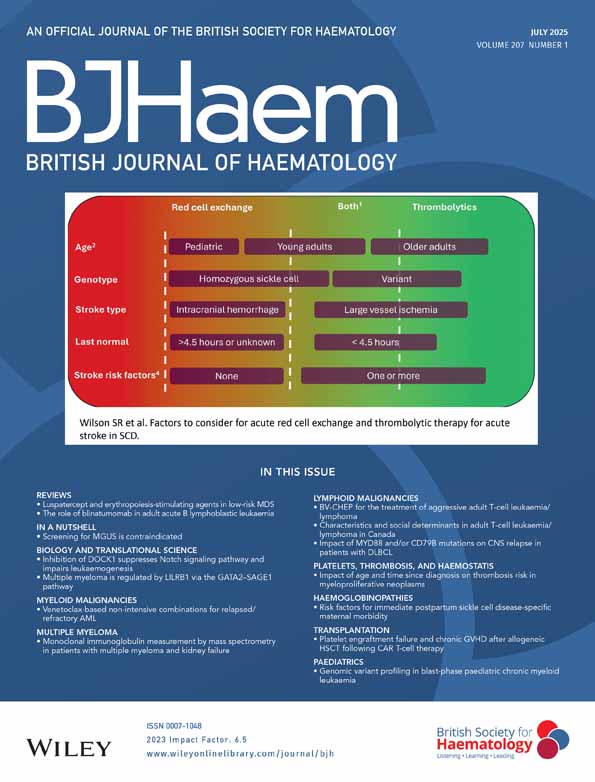Diabetes insipidus as first manifestation of acute myeloid leukaemia with EVI-1-positive, 3q21q26 syndrome and T cell-line antigen expression: what is the EVI-1 gene role?
Abstract
Summary. Two cases of acute myeloid leukaemia (AML) with CD2 and CD7 expression associated with diabetes insipidus (DI) as the initial symptom are presented. Both patients had t(3;3)(q21;q26) associated with monosomy 7 and EVI-1 overexpression. No neurohypophysis infiltration was evident. One patient died during induction chemotherapy, the other did not respond to therapy and died with persistent DI. Our findings further support the existence of a distinct AML entity characterized by the presence of DI, abnormalities of chromosome 3q, dysmegakaryopoiesis and poor outcome, and provide evidence of EVI-1 gene involvement. The possible role of chromosome 3q26 abnormalities in determining this peculiar clinical–biological association is emphasized.




